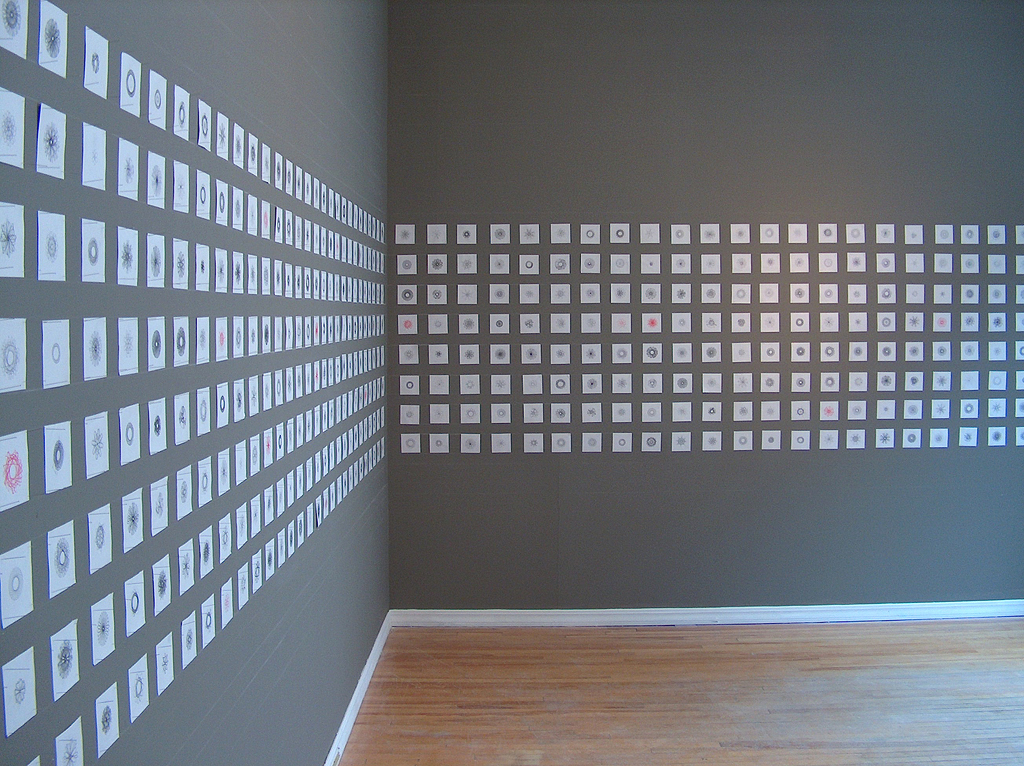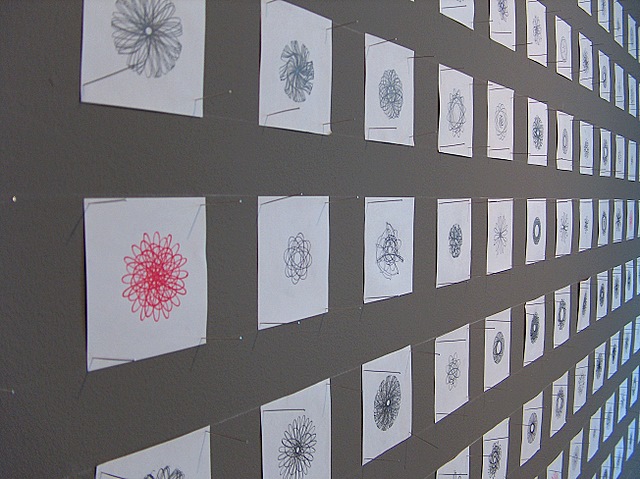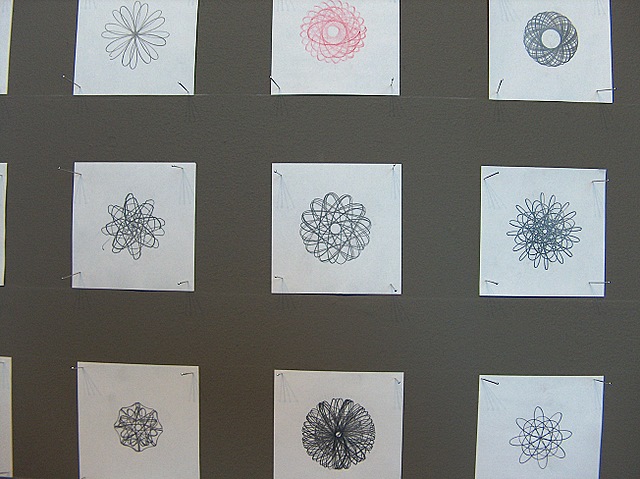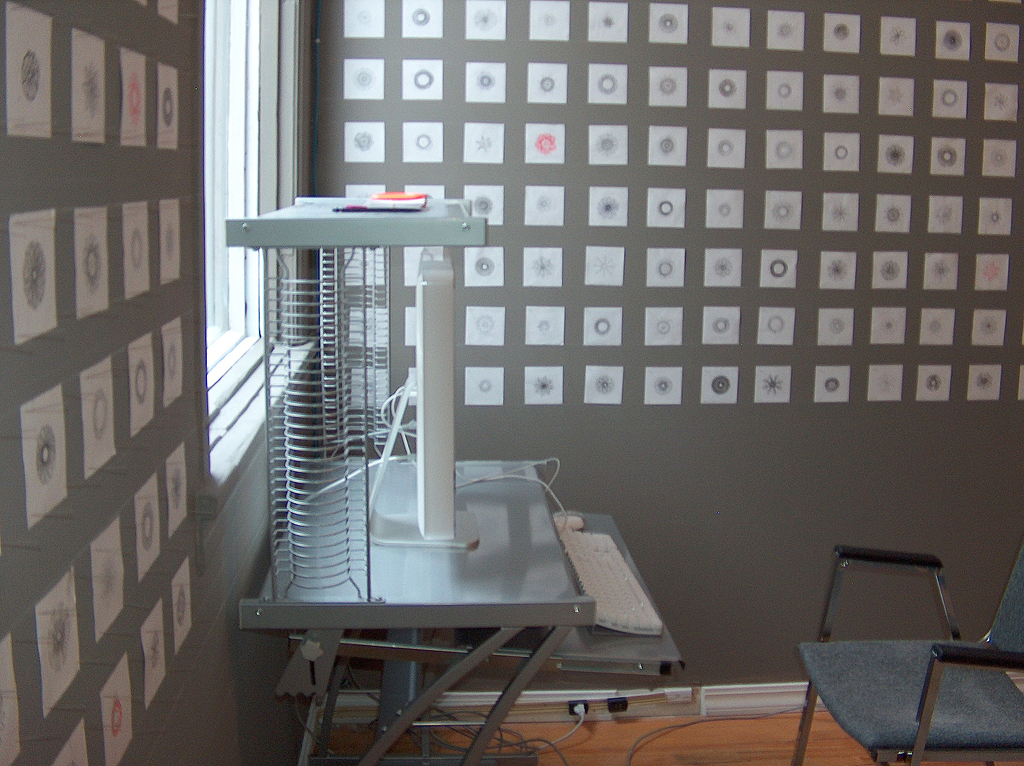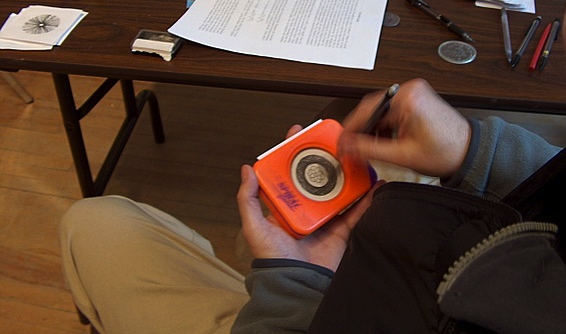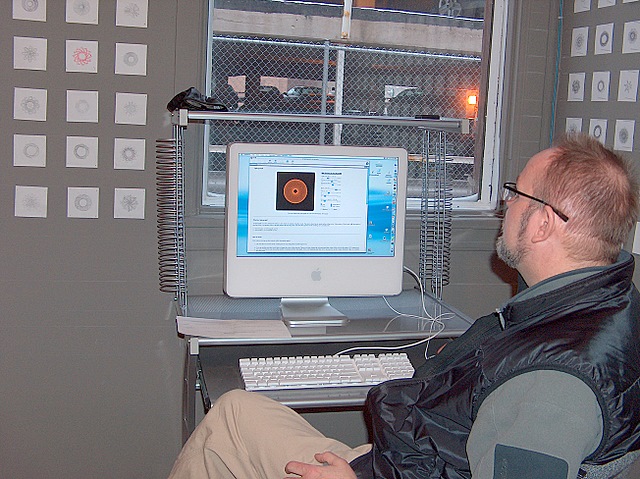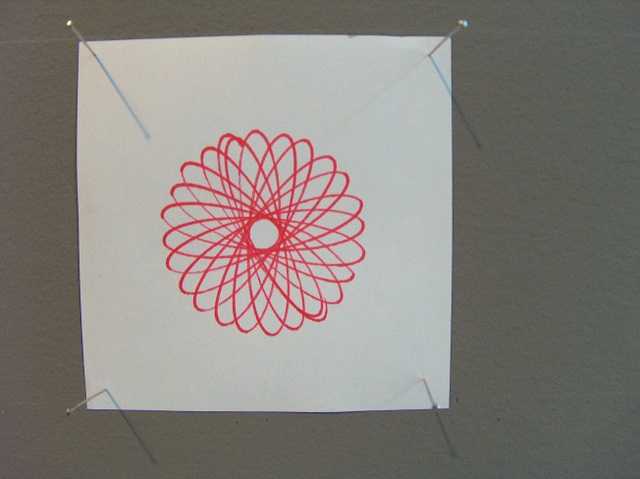In-Spiral project
In-spiral was an investigation into phenomenology and the lived bodily experience. A hand toy and the computer were utilized to produce drawings of hypocycloids. The walls are filled with hundreds of hypocycloids I and visitors drew using the hand toy.
The curved form of a spiral holds aesthetic appeal. It intrigues us, and is associated with the natural world and the cosmos - microcosms to macrocosms - flower head to planetary trajectories. It is in essence poetic geometry. This hand tool employs the principles of math and geometry, using two circles of different radius’ to generate a hypocycloid (the curve produced by a fixed point on the circumference of a small circle of radius rolling around the inside of a large circle of radius). With the principles of math and geometry comes an aspiration for perfection. Geometry holds for us the promise of stasis, stability and predictability. The construction of a spiral from a mathematical formula should be perfect. The spiral is as much a geometrical figure as the square, with its curves as measurable as a straight line. This perfection is achievable on the computer program. The formation of the spiral graph or hypocycloid is exactingly determined by the radius of the circles, the points in the circle and the number of rotations. However, inside my experiment of the drawn spiral this strict aesthetic collapses and the spiral shows the stigma of the human hand. The purity of the form gives way to the hand of the producer; it is lost to chance and our limitations of dexterity. The computer, of course, generates the geometry exactly. However, it is the somewhat unpredictable and changeable nature of the hand drawn spiral that allowed participants to engage in the process repeatedly, and more personally. Each wobble and skid reduces the purity of the geometry, but it is the experience of the physicality of the process, and the undetermined outcome that offered participants a deeper engagement with the process.
